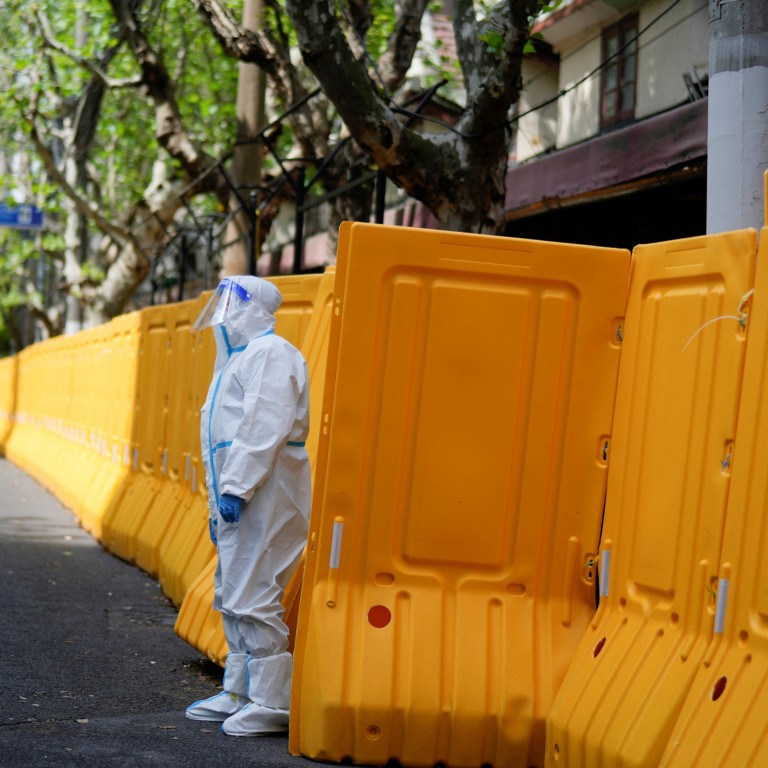
A month of lockdown in Shanghai to reduce China GDP by 3 per cent in April, new model predicts
- The estimation, based on historic truck traffic data, predicts that Shanghai’s monthly real income could drop by more than half
- If more Chinese cities imposed Covid-19 travel restrictions, the national economy could be hit even harder, economists say
The extended Covid-19 lockdown in Shanghai could reduce China’s monthly GDP by 2.5 to 3 per cent, as stringent travel restrictions in the financial centre and logistics hub have started to take a toll on the national economy, with more Chinese cities set to impose equally strict measures, experts said.
The estimation was made by Michael Song, an economics professor at the Chinese University of Hong Kong, based on the model used in a research paper published this month by Song and four economists from Tsinghua University, Zhejiang University, Princeton University and the University of International Business and Economics.
The model used truck flow data covering 315 cities from January 2019 to January 2022 to forecast the impact of a month-long lockdown in Shanghai. It concluded that truck flows connected to the city, as well as Shanghai’s real income, would both decrease by 54 per cent.
How Covid lockdowns have created a nightmare for China’s logistics industry
If more Chinese cities imposed similar travel restrictions, which the model did not take into account, the national economy could be hit even harder, Song warned.
As Shanghai battles its worst coronavirus outbreak since the pandemic struck in 2020, nearby cities, including Suzou, Xuzhou and Yancheng in the neighbouring Jiangsu province, have begun to take emergency actions to prevent or contain the spread of the Omicron outbreak.
Only 13 of China’s top 100 cities have no public health-related restrictions – such as lockdowns and quarantines – in place, while 73 cities that account for 53 per cent of the national GDP have imposed limits on movement and activities, according to an analysis by research firm Gavekal Dragonomics last week.
If China’s four largest cities – Beijing, Shanghai, Shenzhen and Guangzhou – all went into lockdown for a month, the country’s monthly GDP could drop by a whopping 8.6 per cent, according to Song and his team.
‘China’s Motown’ is paralysed as Shanghai’s lockdown idles plants
The Omicron outbreak is likely to continue weighing on China’s growth this month and the rest of the second quarter because of Shanghai’s ongoing lockdown and “overly tightened” local Covid-19 restrictions, according to a UBS report earlier this month.

